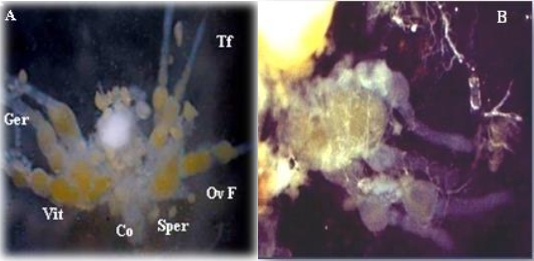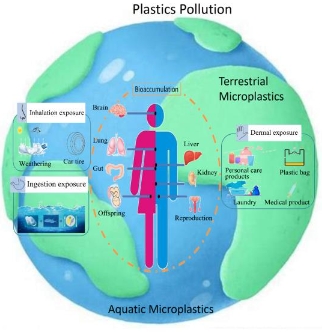An in-depth investigation correlating lifestyle choices with cognitive well-being: Public health implications of food packaging trends and memory capacity, an intensive research study
Abstract
This study presents a multifaceted investigation into the interplay between lifestyle choices, cognitive well-being, and potential health risks associated with food packaging materials. Statistical analyses of memory patterns among diverse population groups, including healthy volunteers, addicted individuals, and those consuming roadside food from street vendors or hawkers, reveal intriguing correlations. The study also conducts a rigorous chemical analysis of newspaper packaging, uncovering significant concerns related to lead contamination. The findings emphasise the need for heightened awareness, further research, and interventions to address potential health risks and ensure the safety of packaging materials. Overall, this research contributes valuable, insightful information that has implications for public health initiatives and packaging industry practices. This is a qualitative study correlating lifestyle choices with cognitive well-being and specific food packaging that impacts the memory and health too. Key findings reveal intriguing correlations between lifestyle habits, the type of food packaging used, and memory capacity. The study’s chemical analysis of newspaper packaging uncovered significant lead contamination, raising serious public health concerns. These findings emphasise the necessity for heightened awareness and targeted interventions to mitigate health risks.
References
[1]Food and Agriculture Organization of the United Nations. Q&A on food safety. Available online: https://www.fao.org/food-safety/background/qa-on-food-safety/en/#:~:text=Food%20safety%20is%20a%20science,that%20is%20safe%20to%20eat (accessed on 7 July 2024).
[2]World Health Organization. Food safety. Available online: https://www.who.int/news-room/fact-sheets/detail/food-safety (accessed on 7 July 2024).
[3]Centers for Disease Control and Prevention. Four Steps to Food Safety: Clean, Separate, Cook, Chill. Available online: https://www.cdc.gov/foodsafety/keep-food-safe.html (accessed on 7 July 2024).
[4]Centers for Disease Control and Prevention. Foods that can cause food poisoning. Available online: https://www.cdc.gov/foodsafety/foods-linked-illness.html (accessed on 7 July 2024).
[5]Centers for Disease Control and Prevention. Current and past multistate foodborne outbreaks. Available online: https://www.cdc.gov/foodsafety/outbreaks/lists/index.html (accessed on 7 July 2024).
[6]FoodSafety.gov. 4 steps to food safety. Available online: https://www.foodsafety.gov/keep-food-safe/4-steps-to-food-safety (accessed on 7 July 2024).
[7]Nation Institute of Food and Agriculture. Food safety. Available online: https://www.nifa.usda.gov/topics/food-safety#:~:text=Importance%20of%20Food%20Safety,addition%20to%20reducing%20foodborne%20illnesse (accessed on 7 July 2024).
[8]Keener L. Capacity building: Harmonization and achieving food safety. In: Boisrobert CE, Stjepanovic A, Oh S, Lelieveld HLM (editors). Ensuring Global Food Safety: Exploring Global Harmonization. Academic Press; 2010. pp. 139-149. doi: 10.1016/b978-0-12-374845-4.00008-4
[9]Lamuka P. Public health measures: Challenges of developing countries in management of food safety. In: Motarjemi Y (editor). Encyclopedia of Food Safety. Academic Press; 2014. pp. 20-26. doi: 10.1016/b978-0-12-378612-8.00310-3
[10]Centers for Disease Control and Prevention. Available online: https://www.cdc.gov/foodsafety/index.html (accessed on 7 July 2024).
[11]Li OY, Shi X. Food safety regulations within countries of increasing global supplier impact. In: Martinovic A, Oh S, Lelieveld H (editors). Ensuring Global Food Safety: Exploring Global Harmonization, 2nd ed. Academic Press; 2022. pp. 151-158. doi: 10.1016/b978-0-12-816011-4.00026-4
[12]International Commission on Microbiological Specifications for Foods. A simplified guide to understanding and using food safety objectives and performance objectives. In: Boisrobert CE, Stjepanovic A, Oh S, Lelieveld HLM (editors). Ensuring Global Food Safety: Exploring Global Harmonization. Academic Press; 2010. pp. 91-98. doi: 10.1016/b978-0-12-374845-4.00004-7
[13]Gordon A, Kennedy H. Conclusions and lessons learned: steps for successful Food Safety and Quality System (FSQS) systems implementation. In: Gordon A (editor). Food Safety and Quality in Developing Countries. Academic Press; 2017. Volume 2. pp. 277-291. doi: 10.1016/b978-0-12-801226-0.00010-4
[14]Rocourt J. Foodborne diseases: Foodborne diseases and vulnerable groups. In: Motarjemi Y (editor). Encyclopedia of Food Safety. Academic Press; 2014. pp. 323-331. doi: 10.1016/b978-0-12-378612-8.00080-9
[15]Better Health Channel. Food safety and storage. Available online: https://www.betterhealth.vic.gov.au/health/healthyliving/food-safety-and-storag (accessed on 7 July 2024).
[16]Australian Institute of Food Safety. What is Food Safety? Available online: https://blog.foodsafety.com.au/what-is-food-safety (accessed on 7 July 2024)
[17]U.S. Food and Drug Administration. Food Safety Modernization Act (FSMA). Available online: https://www.fda.gov/food/guidance-regulation-food-and-dietary-supplements/food-safety-modernization-act-fsma (accessed on 7 July 2024).
[18]U.S. Food and Drug Administration. FSMA final rule on Accredited Third-Party Certification. Available online: https://www.fda.gov/food/food-safety-modernization-act-fsma/fsma-final-rule-accredited-third-party-certification (accessed on 7 July 2024).
[19]Eicher A, Biedermann M, Zurfluh M, et al. Migration by ‘direct’ or ‘indirect’ food contact? ‘Dry’ and ‘wetting’ foods? Experimental data for ‘touching’ contact of dry foods with paper and board. Food Additives & Contaminants: Part A. 2014; 32(1): 110-119. doi: 10.1080/19440049.2014.975753
[20]Van Den Houwe K, Evrard C, Van Loco J, et al. Migration of photoinitiators from cardboard into dry food: evaluation of Tenax® as a food simulant. Food Additives & Contaminants: Part A. 2016; 33(5): 913-920. doi: 10.1080/19440049.2016.1179562
[21]Van Den Houwe K, van de Velde S, Evrard C, et al. Evaluation of the migration of 15 photo-initiators from cardboard packaging into Tenax®using ultra-performance liquid chromatography-tandem mass spectrometry (UPLC-MS/MS). Food Additives & Contaminants: Part A. 2014; 31(4): 767-775. doi: 10.1080/19440049.2014.886340
[22]Bradley EL, Stratton JS, Leak J, et al. Printing ink compounds in foods: UK survey results. Food Additives and Contaminants: Part B. 2013; 6(2): 73-83. doi: 10.1080/19393210.2012.725774
[23]Sagratini G, Caprioli G, Cristalli G, et al. Determination of ink photoinitiators in packaged beverages by gas chromatography–mass spectrometry and liquid chromatography–mass spectrometry. Journal of Chromatography A. 2008; 1194(2): 213-220. doi: 10.1016/j.chroma.2008.04.057
[24]Summerfield W, Cooper I. Investigation of migration from paper and board into food-development of methods for rapid testing. Food Additives and Contaminants. 2001; 18(1): 77-88. doi: 10.1080/02652030010004674
[25]Boccacci Mariani M, Chiacchierini E, Gesumundo C. Potential migration of Diisopropyl naphthalenes from recycled paperboard packaging into dry foods. Food Additives and Contaminants. 1999; 16(5): 207-213. doi: 10.1080/026520399284073
[26]Pyatha S, Kim H, Lee D, et al. Co-exposure to lead, mercury, and cadmium induces neurobehavioral impairments in mice by interfering with dopaminergic and serotonergic neurotransmission in the striatum. Frontiers in Public Health. 2023; 11. doi: 10.3389/fpubh.2023.1265864
[27]Daniel WW. Biostatistics: A Foundation for Analysis in the Health Science, 7th ed. John Wiley and Sons; 2005.
[28]Bolton S, Bon C. Pharmaceutical Statistics. In: Practical and Clinical Applications, 4th ed. Marcel Dekker; 2004.
[29]United States Pharmacopeial Convention. Usp36-Nf31. Vol 1. United States of Pharmacopeia; 2012.
Copyright (c) 2024 Saurabh Dilip Bhandare

This work is licensed under a Creative Commons Attribution 4.0 International License.








